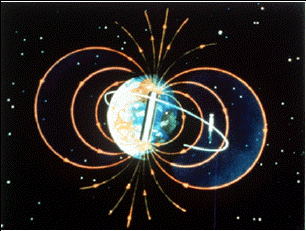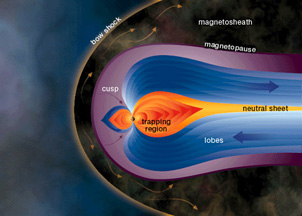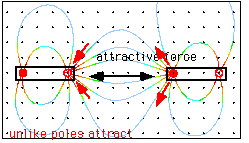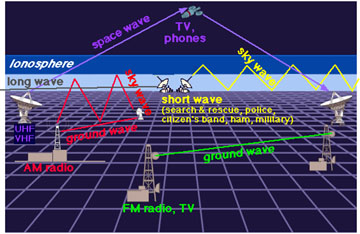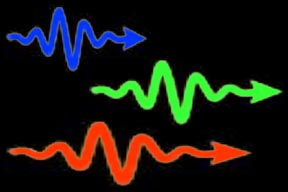Bar Magnet, Compass, and Magnetic Field Lines Interactive
The red and green rectangle in this interactive represents a bar magnet. The smaller, red and green diamond represents a compass needle. Drag the compass needle around to explore the magnetic field surrounding the bar magnet.
Red represents the north magnetic pole of both the bar magnet and the compass needle. Green represents the south magnetic pole of both the magnet and the needle.
This interactive makes use of Java software. If you cannot see the interactive, you may not have Java on your computer.
© Walter Fendt, April 20, 2001 The original version of this applet can be found at Walter Fendt's web site at www.walter-fendt.de/ph11e/mfbar.htm. Other Java applets by Walter Fendt related to physics topics are available at www.walter-fendt.de/ph11e. |
When you click on the magnetic needle and hold down the mouse button, a magnetic field line through the center of the compass needle is drawn in blue. When you release the mouse button, the field line is "frozen" in place. You can draw additional field lines by clicking on the compass needle and dragging it to a new position.
Arrows along the magnetic field line show the direction of the field. By convention, magnetic field lines "flow" from the north pole of a magnet to its south pole, in the direction that the north pole of the compass needle points.
Click the "Clear field lines" button to erase all of the field lines you have drawn so far and start over with a "clean slate".
Click the "Turn magnet" button to flip the bar magnet so the directions of its magnetic poles are reversed.
![]() Interactive animation: Bar Magnet & Compass (using Flash software)
Interactive animation: Bar Magnet & Compass (using Flash software)
![]() Interactive animation: Earth's Magnetic Field
Interactive animation: Earth's Magnetic Field
![]() Earth's North Magnetic Pole interactive
Earth's North Magnetic Pole interactive
![]() Activity: Build a Magnetometer and use it to detect magnetic fields!
Activity: Build a Magnetometer and use it to detect magnetic fields!







